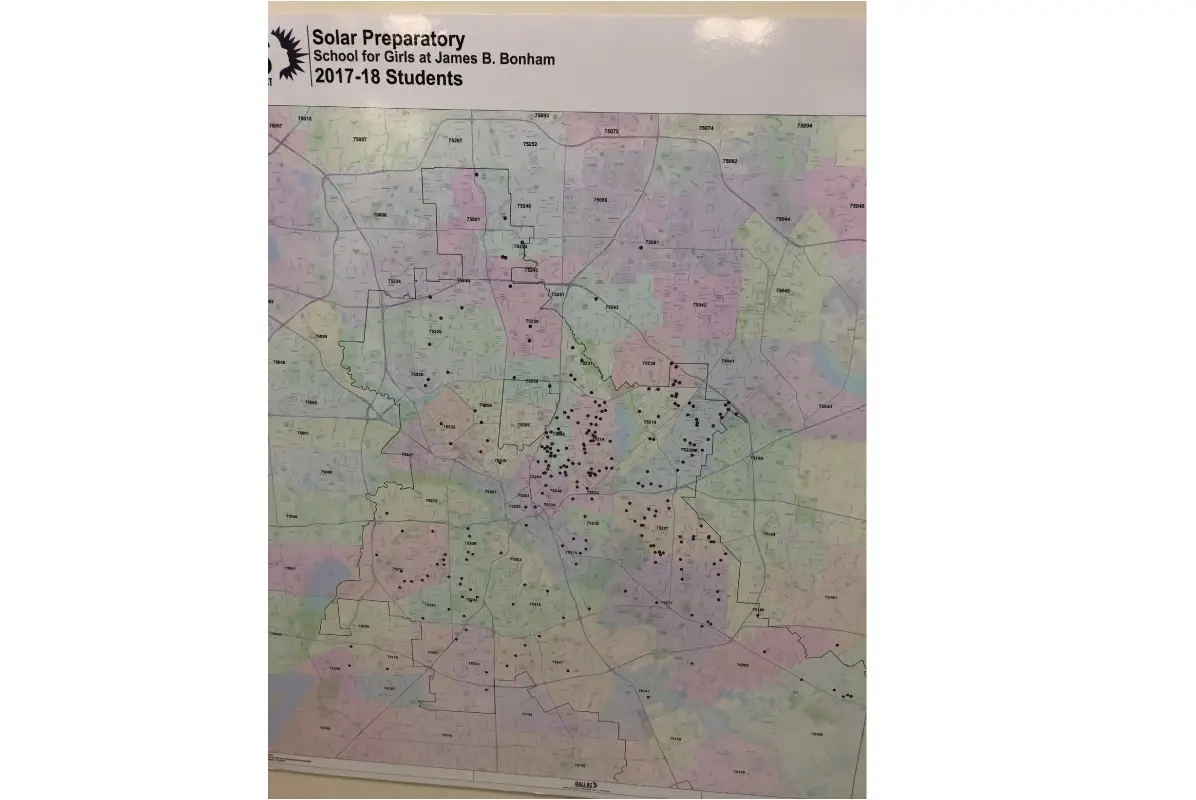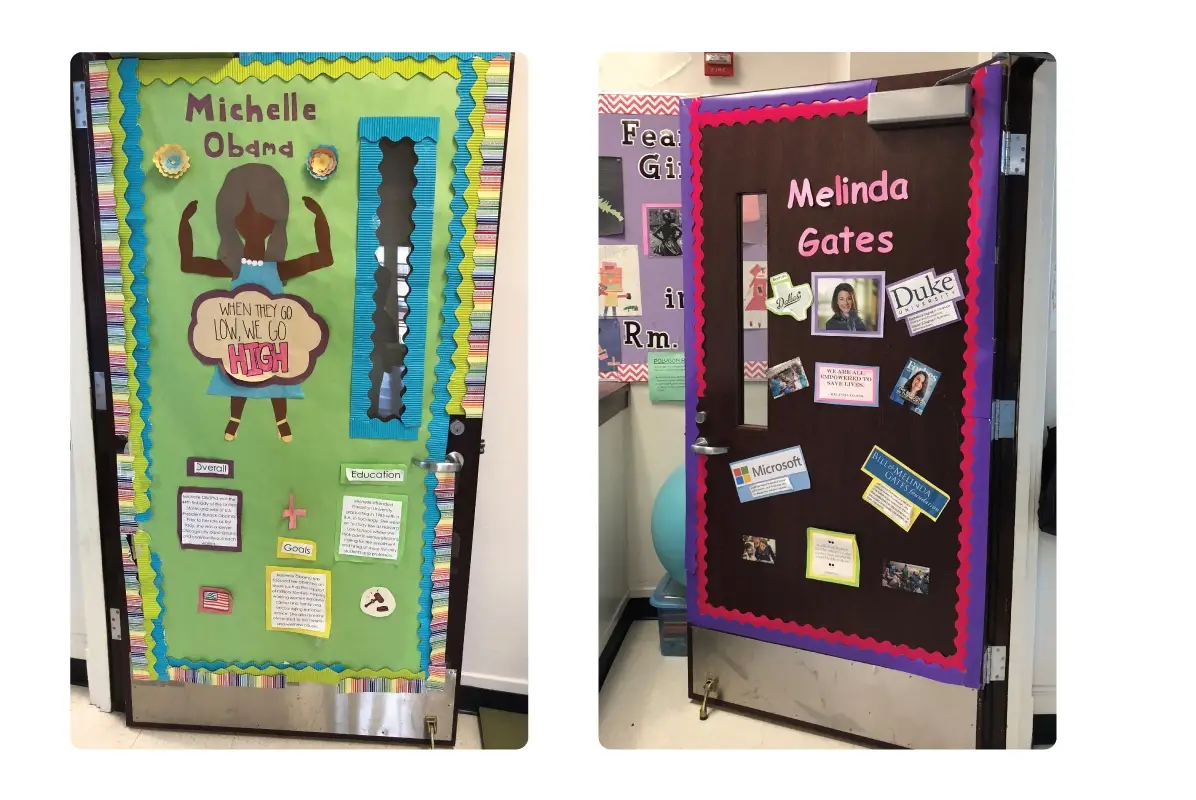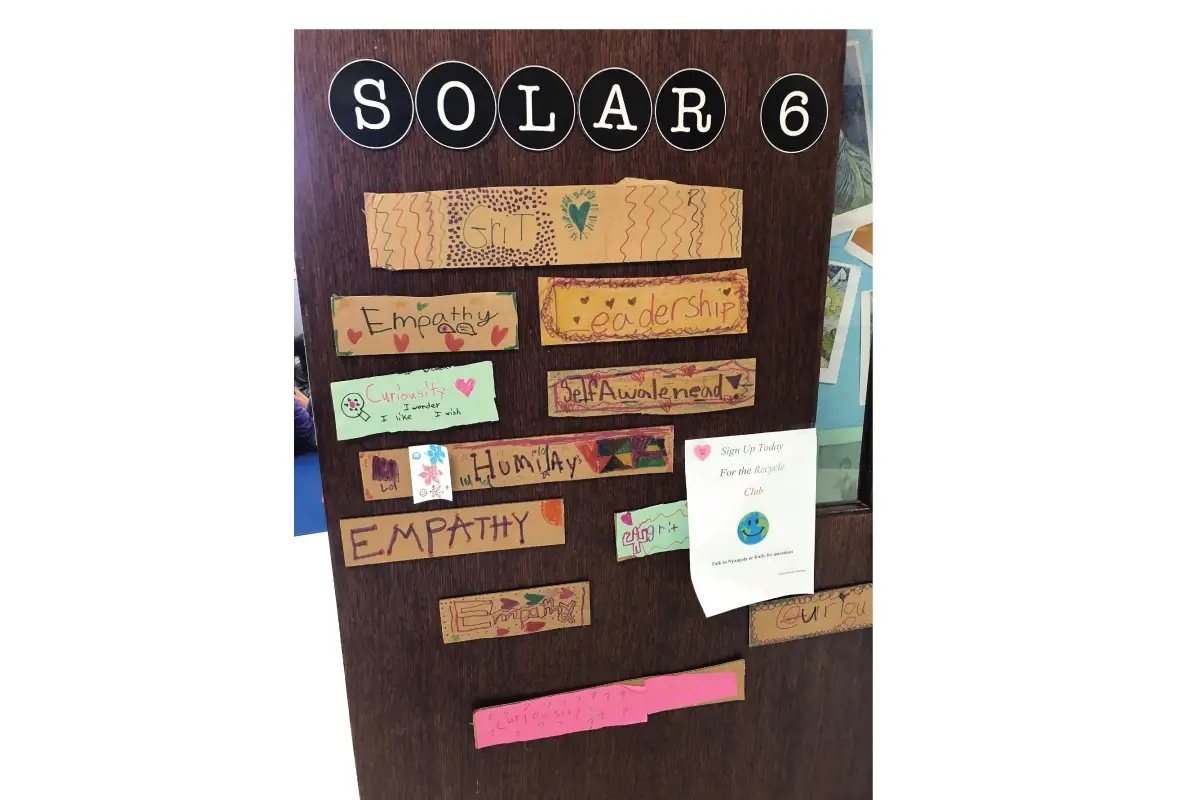I recently toured Solar Preparatory School for Girls, an elementary school in the Dallas Independent School District. Solar Prep, as it is commonly called, is a choice school, which means it has no attendance zone and uses a lottery for enrollment. The school has about 300 students currently in kindergarten through third grade, and will continue to add one grade a year until eighth grade. The major construction zone in the rear of the building gives signs of the school’s upcoming expansion.
As I toured the school, I spoke with the school’s assistant principal, Jennifer Turner. Ms. Turner helped establish the school and toured schools all over the city and country to help inform the model for Solar Prep. I was interested in learning about their decision to create an all-girls school, but we had a few stops on the way before we could get to that conversation.
The first thing Ms. Turner pointed out was the attendance map. Since the school has no designated attendance zone, students attend from neighborhoods all over the city.

Solar Prep is different from other schools in one big way: the lottery. While it is not the only school to use an attendance lottery, its lottery functions very differently from other schools. For starters, there are no academic admission standards. Students don’t take a test to qualify for admission, and the lottery is pulled randomly from the pool of applicants.
But the lottery is not entirely random, and that’s because it’s a lottery with a twist. The lottery is weighted to achieve 50/50 socioeconomic diversity. The result is a student population where 50% of students qualify for free or reduced lunch (a benchmark for low socioeconomic status), and 50% of students do not.
Why the attention to socioeconomic diversity? Ms. Turner explains that both groups benefit from such a system. Students from higher-income homes typically have resources and connections that benefit the school in ways that students from lower-income homes are less able to provide. On the other hand, students from higher-income homes learn more about people who come from different backgrounds and are better able to understand different perspectives than girls who don’t have that exposure until much later in life.
I asked Ms. Turner about parental involvement in the school, through formal activities like a PTA and through informal opportunities like school gatherings. Typically, these types of activities fall along class lines. Middle and upper class families may be more likely to attend PTA meetings and other school events for any number of reasons – their parents were involved in their education so they see that as a normal role of parenting, they have positive associations with school, they have more time because they stay home or work one job (rather than multiple jobs), they have two parents in the home so one can stay with the kids while they attend events at the school, or many other reasons. Ms. Turner agreed with that common experience and added that at Solar Prep, they are using innovative strategies to include all families in their children’s educational experience. One example is that the PTA meetings are held in different neighborhoods around the city rather than all at the school. This makes it more accessible for families who live farther from the school but who want to be involved. The school’s principal also holds Coffee with the Principal in different parts of town.
As we continued our tour, I noticed the doors of the classrooms were all decorated with strong female role models. I saw the face of Michelle Obama, Malala, Sally Ride and other names I didn’t recognize. According to Ms. Turner, these are the “fierce females” that each class has as a namesake. Teachers nominate the person they want to honor on their door and petition it to the staff during staff meetings before the start of the year. Once they’ve selected the namesake, the students learn about her throughout the year. Some doors had student research papers about the namesake attached to the door.




We finally made our way to the Makerspace, where Ms. Turner was cleaning up from a recent class with kindergarten students. I asked her about the school’s decision to adopt a single-gender model. She shared that the school’s principal, Mrs. Bernadino, had attended co-ed public schools and then went to a private all-girls school on a scholarship for high school. She had a positive experience there and wanted to provide that same experience for girls who wouldn’t be able to attend a private school on a scholarship as she had. Ms. Turner herself had been a fifth grade science teacher and had noticed even girls at that age started to pull away from STEM (Science, Technology, Engineering and Math) related subjects.
The idea of advancing girls’ interest and confidence in STEM subjects was the most important reason behind creating an all-girls school. Ms. Turner shared that the vision is that girls simply don’t learn any stereotypes about boys and girls with STEM. When you’re in a classroom full of girls, she explains, there’s no perception that these topics aren’t something made for girls. When all you see around you are other girls playing the role of scientist, engineer or mathematician, you have no reason to think that it’s not your world to join.
The other big advantage for an all-girls school is confidence. Ms. Turner explained that the girls don’t feel the need to sit in the back or worry about raising their hand in class. Everyone in the school has a voice, and everyone can feel comfortable sharing their voice. Every morning, the school begins with a school-wide gathering, called the Sisterhood Circle. Students cheer, chant, and recite the Solar Prep pledge. Then students go into their classroom where they gather as a class for “shine time”, which is a morning meeting. Every class simultaneously works on one of six social emotional skills: curiosity, self-awareness, empathy, humility, leadership, and grit. Students discuss these topics during shine time and throughout the school day. Each theme lasts for three weeks, and then the school moves on to the next. The themes are repeated throughout the year as they cycle through them, allowing students to go deeper on each topic as they learn more.

I asked Ms. Turner, “What hesitations do you hear from people about an all-girls school?” She doesn’t hear many. But one that she’s heard before is, “What happens when they go to co-ed school in high school? How will they adapt? What will that be like for them?” Her answer? Simply, “By then, our hope is that they’ll be so confident from their experience here, that they’ll be ready to enter that world and excel.”
Ms. Turner says the secret to Solar Prep isn’t that the curriculum is different. Of course, they focus on women in history and female role models. But it’s more than that. What makes Solar Prep special is infused throughout the culture of the school. As Ms. Turner says, “It’s a regular school. It just has a little bit different feel.” Peeking into classrooms and watching students collaborate and explore, I agree. In so many ways, it does look and feel like any regular elementary school. But it has something a little special, too.
Share with
Related Resources